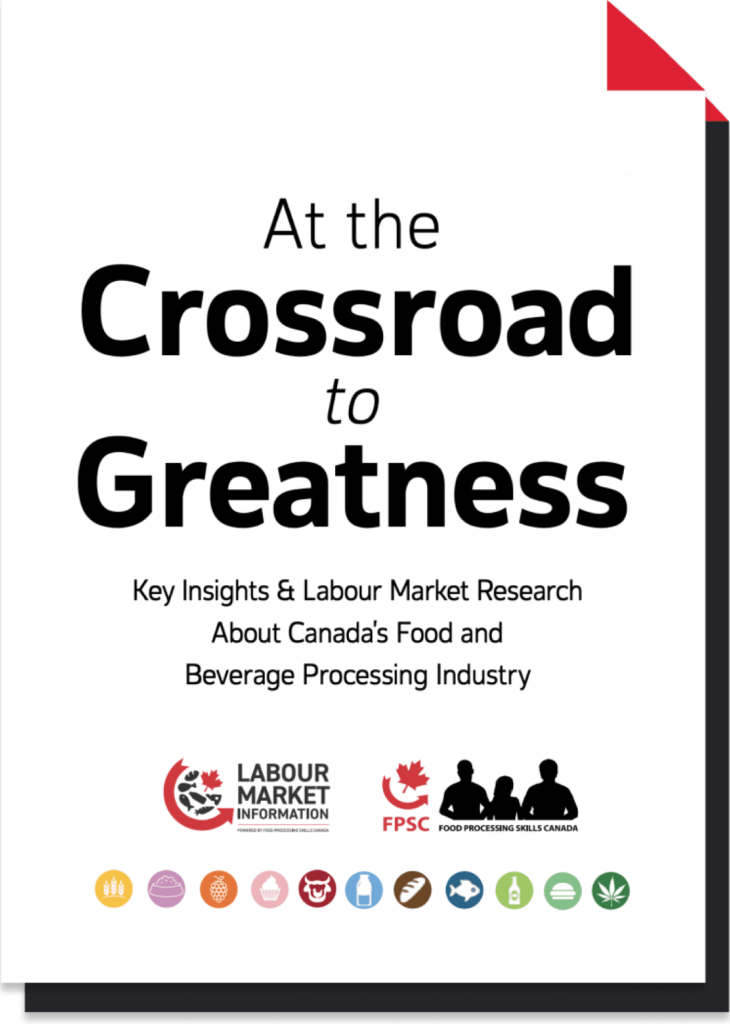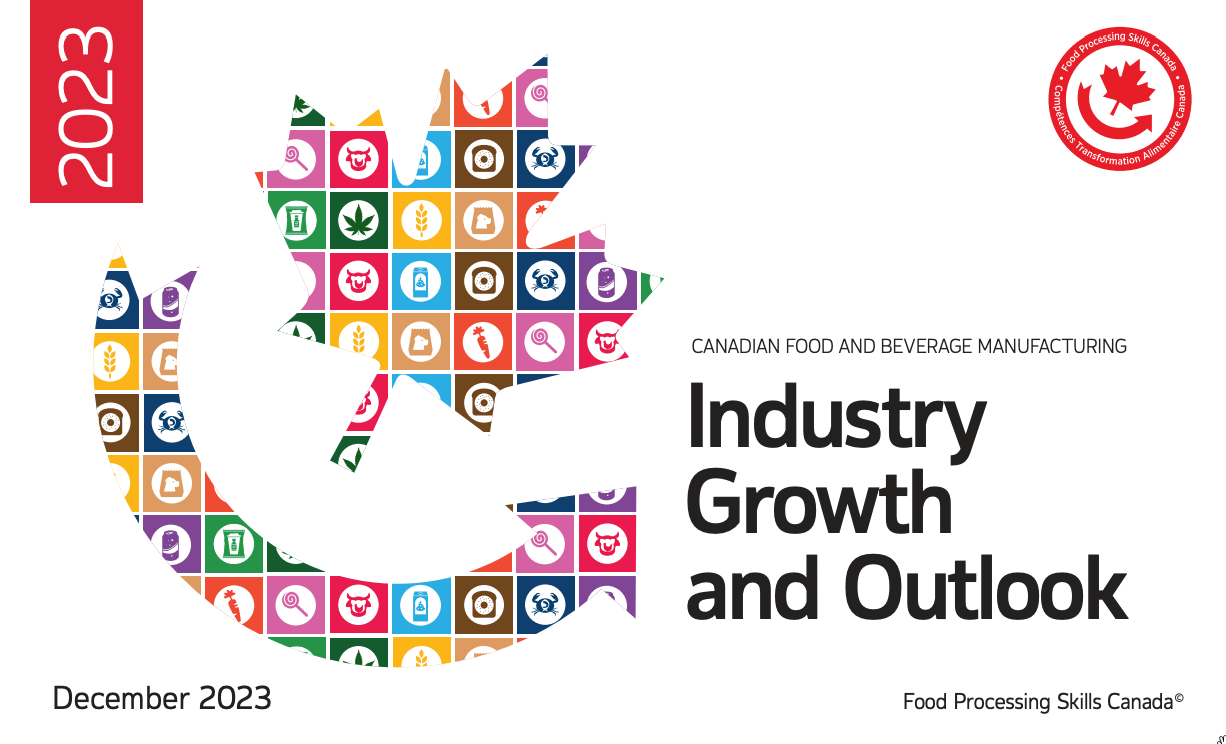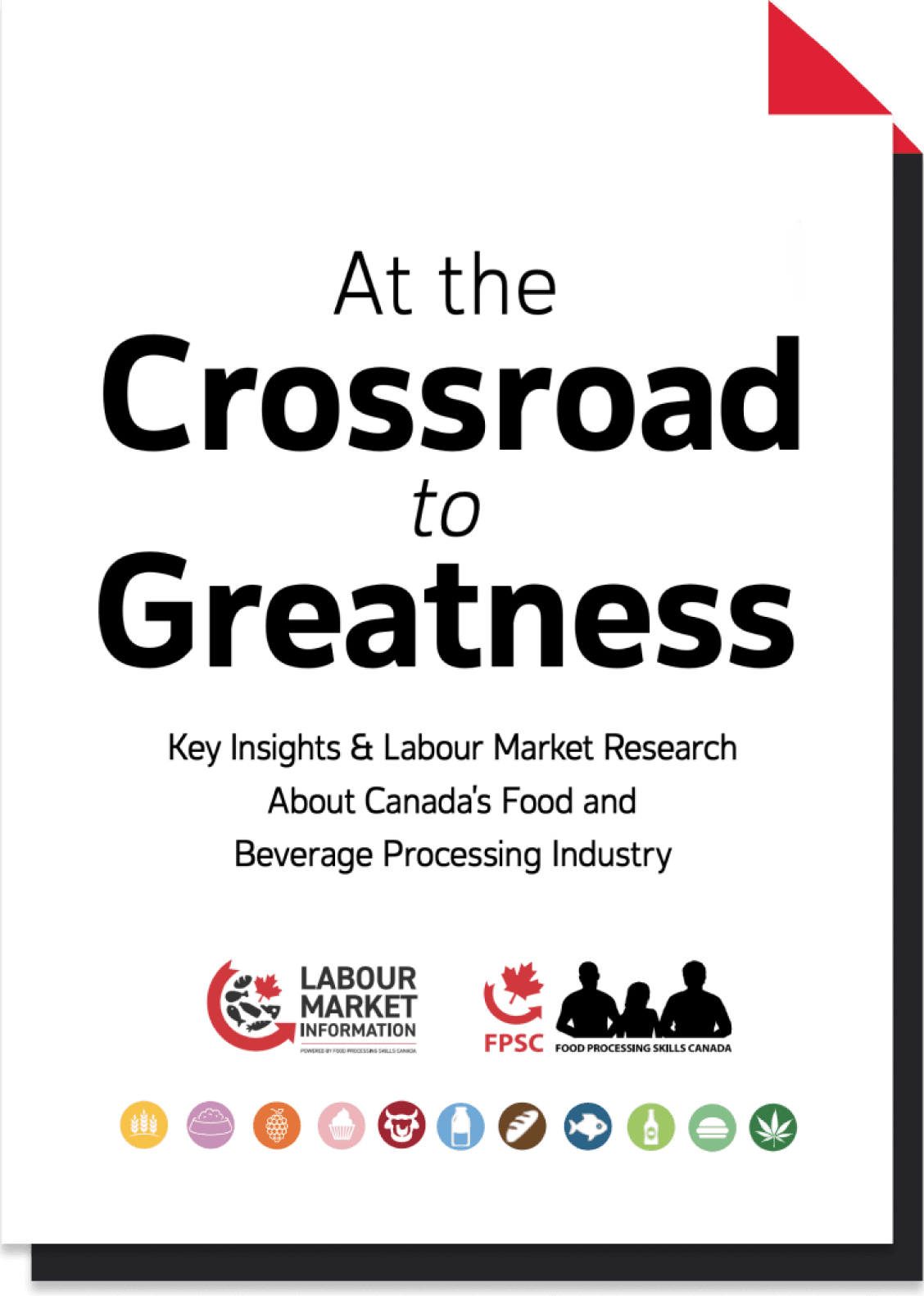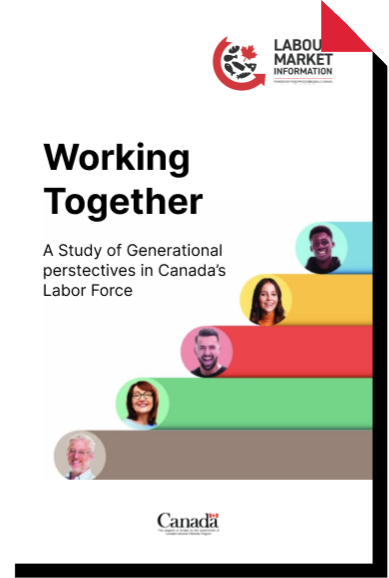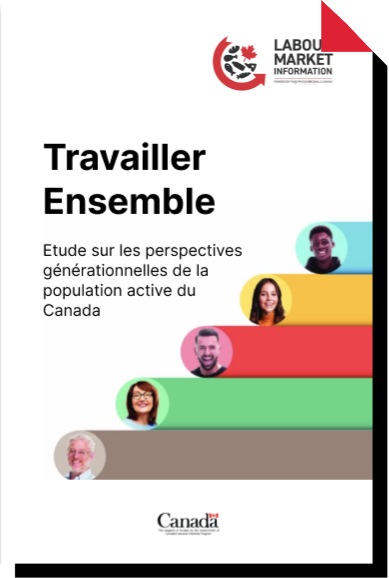Labour Market Recommendations
for a Better Future

When Food Processing Skills Canada’s labour market information report, At the Crossroad to Greatness, was released in 2021 it contained a series of recommendations. The report team — which included subject matter experts, economists, statisticians and researchers — recognized that the information contained within the report was incredibly valuable, not only to understanding the immediate situation for Canada’s food and beverage manufacturing industry, but also as a data-driven guide to future opportunities.
The Crossroad to Greatness concludes with a final chapter providing a series of recommendations to be driven by industry and its partners. Recovering from the COVID-19 global pandemic and solving the critical labour crisis starts now.
Building The Workforce for A Better Future — 7 Key Recommendations
1. Positively Shift Industry Perceptions
Knowledge of the food and beverage processing industry is very low with just under half of Canadians with little or no awareness of the industry (49%). Only 31% have a positive impression of the jobs offered and barely one in six would apply for one of those jobs if it was available near them. For the meat and seafood processing sub-sectors, the results are even lower.
At the same time, the research indicates that four target audiences are promising sources of labour: youth, people with a history of tenuous attachment to the labour market,recent immigrants, and Indigenous Peoples, with the most potential lying within the latter two segments.
What We Need to Do
- Develop and launch a national awareness and reputation program to profile the industry to Canadians and people around the globe and positively shift perceptions.
- Create a labour outlook report to provide the latest information and trends on occupations, employment, labour supply and compensation to industry and policy makers.
- Collaborate with initiatives such as Food and Beverage Ontario’s CareersNOW! program to shift career perceptions and engage new people.
- Create an online, interactive Careers Map for individuals to explore the variety of career pathways available in the industry.
2. Positively Shift Industry Perceptions
The sector is predominantly male, ageing and under-indexes on Indigenous Peoples. The data also shows a path forward on positioning the value of the sector with younger people, women, Indigenous Peoples and new Canadians — many of these groups are already more familiar with the industry than the general public and have a slightly more positive view of it.
Recruitment strategies that connect with underrepresented candidates to work in food and beverage processing must be closely linked to programs designed to increase awareness of the sector and its appeal to different generations and demographics. It is also incumbent on employers to examine how their organization projects its values and principles to a range of audiences, from junior employees to customers, along with suppliers,the surrounding communities and governments.
What We Need to Do
- Launch Food Processing Skills Canada’s Rapid Results, a new service that supplies businesses with real-time, critical information to ensuring a successful recruitment and retention strategy.
- Encourage employers to engage in student work integrated learning through programs such as Food Processing Skills Canada’s SWPP+ to facilitate career exploration and future jobs.
- Deliver a new Employer Readiness Strategy to provide businesses with latest recruitment best practices and resources.
3. Adopt Modern HR Management Practices
Human resource management is more than just hiring workers. It includes covering a wide variety of issues such as compensation, benefits, performance management, safety,wellness, employee motivation, skills development and workplace culture and environment.
Strong HR policies and practices not only make it easier to recruit and retain workers
but also help to promote a good brand reputation with regulators and the general public and reduce legal and reputational risks.
What We Need to Do
- Publish reports such as Working Together — A Study of Generational Perspective Canada’s Labour Force to facilitate employer education on current and future workforce demographics.
- Create shared HR service bureaus in strategic locations across Canada to provide businesses with expert advice and recruitment services.
- Offer free training to employers through programs such as Succeeding at Work and multilingual training — Succeeding at Work Language Stream — to support rapid skills training.
4. Build and Grow Skills and Knowledge
Canada’s food and beverage processing industry faces considerable challenges recruiting enough workers with appropriate skills and training. While some jobs in the sector will continue to be foundational, requiring only limited skills and knowledge at the entry stage, many others will require higher levels of training or completely new skills due to innovation and automation and the introduction of new products, technologies and processes.
There is several types of training available to industry employers and people through colleges, universities, private trainers and associations such as Food Processing Skills Canada. The research indicates that in some regions and study areas training options are sufficient to meet industry needs, and in others there are gaps.
What We Need to Do
- Create an interactive Canadian Map of industry business, educators, employment agencies and other associations involved in training and placement to identify gaps.
- Develop a Coaching for Success model to support employers and complement jobseeker and employee programs such as Food Processing Skills Canada’s Skills Training Atlantic Canada.
- Establish a Canadian-wide Educator Forum to connect leaders in the secondary and post-secondary space with industry employers to identify educational/career pathways needs.
- Improve access to Food Processing Skills Canada’s Food Skills Library and the Canadian Food Processors Institute for e-training and resources.
5. Increase Industry Efficiency and Automation
Several emerging technologies are increasing the productivity and quality of food and beverage processors, yet a 2017 study of innovation in Canada’s food and beverage processing industry found that Canadian processors trail their counterparts in the United States when it comes to investing in technology. This includes not only the use of computers and automation but also the significant transformation that will come through the adoption of “Industry 4.0,” which adds smart and autonomous systems that use data and machine learning.
Increasing automation in the food and beverage processing industry requires considerable capital outlays which can be difficult for an industry facing low-profit margins and high regulatory and administrative costs. However, research shows that Industry 4.0 integration can boost labour productivity by as much as 0.8% annually.
What We Need to Do
- Launch Food Processing Skills Canada’s iFood 360 program to introduce virtual reality training to the workplace and as a career exploration opportunity for students and jobseekers.
- Make new investments in the food and beverage processing sector for industry 4.0 adoption that will: develop “smart” factories that connect machines, devices, sensors and workers
- create integrated supply chains that allow businesses to respond to customer needs and optimize the use of labour
- increase the traceability of ingredients to support consumers in better monitoring where their food comes from and increase the speed and effectiveness of product recalls when needed
6. Use Immigration to Fill Hiring Gaps
Labour market tightness is a serious issue in many geographic areas — there simply aren’t enough people. There is also an alarming volume of new workers needed to maintain the status quo, and to meet growth targets. Innovation and Industry 4.0 alone cannot bridge the gap.
New entrants to Canada will continue to play a critical role in addressing labour replacement and growth tensions. Immigration can support hiring gaps in two ways: by bringing in temporary workers to fill temporary labour and skills shortages, and by bringing in permanent residents to fill shortages for the long-term. New immigrants in particular have been identified as a group that is more likely than many to be interested in career opportunities in the sector.
What We Need to Do
- Develop more capacity within pre-arrival training programs like Food Processing Skills Canada’s Food Safety Employment Readiness Program which provides training to successfully support an individual in starting a new career in Canada’s food and beverage processing sector.
- Simplify and streamline the Temporary Foreign Worker Program labour market impact assessment process, adjust the registration fee for multiple applications, introduce a mechanism for employers to discover why they were denied and appeal the decision if they choose, and update the Job Bank advertising rules.
- Develop and implement new solutions to hiring temporary foreign workers such as Food and Beverage Canada’s Emergency Foreign Worker Program proposal.
- Expand multilingual training across Canada to ensure workers that do not have English as their first language are correctly trained for job success.
7. Conducting Business During COVID-19 and Industry Recovery
Research suggests that the impacts of COVID-19 on the Canadian food and beverage processing industry have been very negative, with customer orders down sharply and some abrupt shifts in consumer consumption habits. The industry has also had to reconfigure workplaces to protect the health of employees, increase production in some areas and shift production in others. While the situation in the food and beverage processing sector has been very challenging, comparative analysis suggests that it has coped relatively well compared to other sectors of the economy.
What We Need to Do
- Develop new training like Food Processing Skills Canada’s Acahkos Program to support industry workers with social emotional skills for improved coping and stress management.
- Launch a pan-Canadian outreach tour with regional sessions attended by leaders in business, education and government to explore barriers to success and the solutions.
- Model Canada’s food economy to better understand and predict effects on the workforce from other major shocks related to trade, labour, transport and new pandemics.
- Improve organization and classification of the NAICS codes, especially in Other Food Manufacturing (NAICS 3119), and particularly All Other Food Manufacturing (NAICS 31199), to make the information collected more relevant and useful to stakeholders.
Resources
Videos & Webinars
On demand videos & webinars on a variety of topics.
Career Ladders
Learn about career ladders in the food and beverage processing industry.
Employer Programs
Employer programs for Canada’s food and beverage processing industry.


